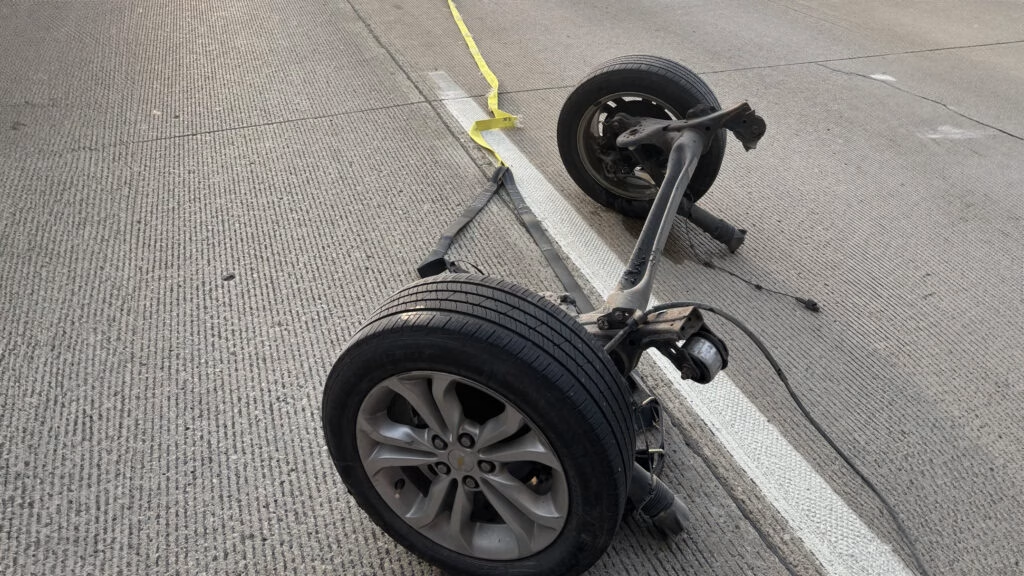How Did Police Use the Grappler Device to Stop a Stolen Car in Michigan?
When a stolen Chevrolet Cruze was spotted on I-96 in Livonia, Michigan, police didn’t reach for the spike strips or set up a risky roadblock. Instead, they rolled out a piece of tech that’s changing the way officers handle high-stakes chases: the Grappler. This isn’t your average pursuit tool. Mounted to the front of a patrol car, the Grappler deploys a heavy-duty strap designed to snag and lock up a fleeing vehicle’s rear wheel. The goal? End the chase quickly, safely, and without the adrenaline-fueled chaos that often leads to crashes.
In this case, officers from Livonia moved in after the suspect refused to pull over. The Grappler did its job—sort of. The suspect, determined not to give up, kept driving even after the strap caught the wheel. The result? The Cruze’s rear axle was ripped clean off, leaving the car totaled and the chase over. Police praised the device for allowing them to stop the suspects without putting the public at risk, a sentiment echoed by Michigan State Police Lt. Mike Shaw, who highlighted the importance of using technology to keep communities safe.
What Happens to the Car Owner After a High-Tech Police Stop?
Here’s where things get tricky. While the Grappler prevented a dangerous, high-speed pursuit, it also left the stolen Cruze in pieces. And despite the car being recovered, the owner is now facing a harsh reality: insurance will likely have to cover the damages, not the police department. That’s standard practice in most states, where law enforcement isn’t typically held liable for damage that occurs during the recovery of a stolen vehicle.
For the owner, it’s a double blow—first losing the car to theft, then dealing with the aftermath of a total loss. Depending on the insurance policy, the payout may not cover the full value of the car or the hassle of finding a replacement. It’s a reminder that even when police do everything right, the consequences for victims of car theft can linger long after the sirens fade.
Why Are Grappler Devices Becoming More Popular in Police Work?
The rise of the Grappler and similar devices isn’t just about catching bad guys—it’s about reducing risk for everyone involved. Traditional police chases are notoriously dangerous. According to the National Highway Traffic Safety Administration, pursuits result in hundreds of deaths each year, many involving innocent bystanders. Tools like the Grappler offer a way to end pursuits without the need for high speeds or risky maneuvers.
Departments across the country are taking notice. In Arizona, for example, police have used the Grappler to safely stop fleeing vehicles, and the technology is spreading to other states. Experts in law enforcement technology point out that these devices not only save lives but also reduce property damage and legal costs associated with more aggressive tactics.
What Are the Legal and Insurance Implications for Victims of Stolen Vehicles?
If your car is stolen and then destroyed during a police recovery, you might expect the city or police department to foot the bill. Unfortunately, that’s rarely the case. Most insurance policies treat damage from police recovery as a comprehensive claim, which means you’re on the hook for your deductible and any potential rate increases. And if your policy doesn’t cover theft or total loss, you could be left with nothing.
Some legal experts argue that as police use more aggressive or high-tech methods to stop stolen vehicles, there should be clearer guidelines—and perhaps more support—for victims. Until then, car owners are advised to review their insurance coverage carefully and consider adding comprehensive protection if they haven’t already. It’s not just about theft; it’s about what happens when your car is caught in the crossfire of a police operation.
How Do Police Balance Public Safety With Property Damage in Pursuits?
Every pursuit is a balancing act. On one hand, officers have a duty to apprehend suspects and protect the public. On the other, they’re responsible for minimizing harm—both to bystanders and to property. Devices like the Grappler represent a step forward, offering a middle ground between letting suspects go and risking a dangerous chase.
Still, no solution is perfect. In this Michigan case, the suspects were arrested without injury, but the car was destroyed. For law enforcement, that’s often an acceptable trade-off. For car owners, it’s a bitter pill. The ongoing challenge is to refine these tools and protocols so that safety and fairness go hand in hand.
What Can Car Owners Do to Protect Themselves From the Fallout of Car Theft?
While you can’t control how police recover your stolen vehicle, you can take steps to protect yourself before theft ever happens. Start with comprehensive insurance—yes, it costs more, but it’s your best bet if your car is stolen or damaged in a recovery. Consider anti-theft devices, GPS trackers, and parking in well-lit, secure areas to reduce your risk in the first place.
If you do become a victim, document everything for your insurer and stay in close contact with law enforcement. Some states offer victim compensation programs, though they rarely cover property damage from police actions. The key is to be proactive, not just reactive.
The big takeaway? Stopping car theft isn’t about perfection—it’s about smarter adjustments. Start with one change this week, and you’ll likely spot the difference by month’s end.

